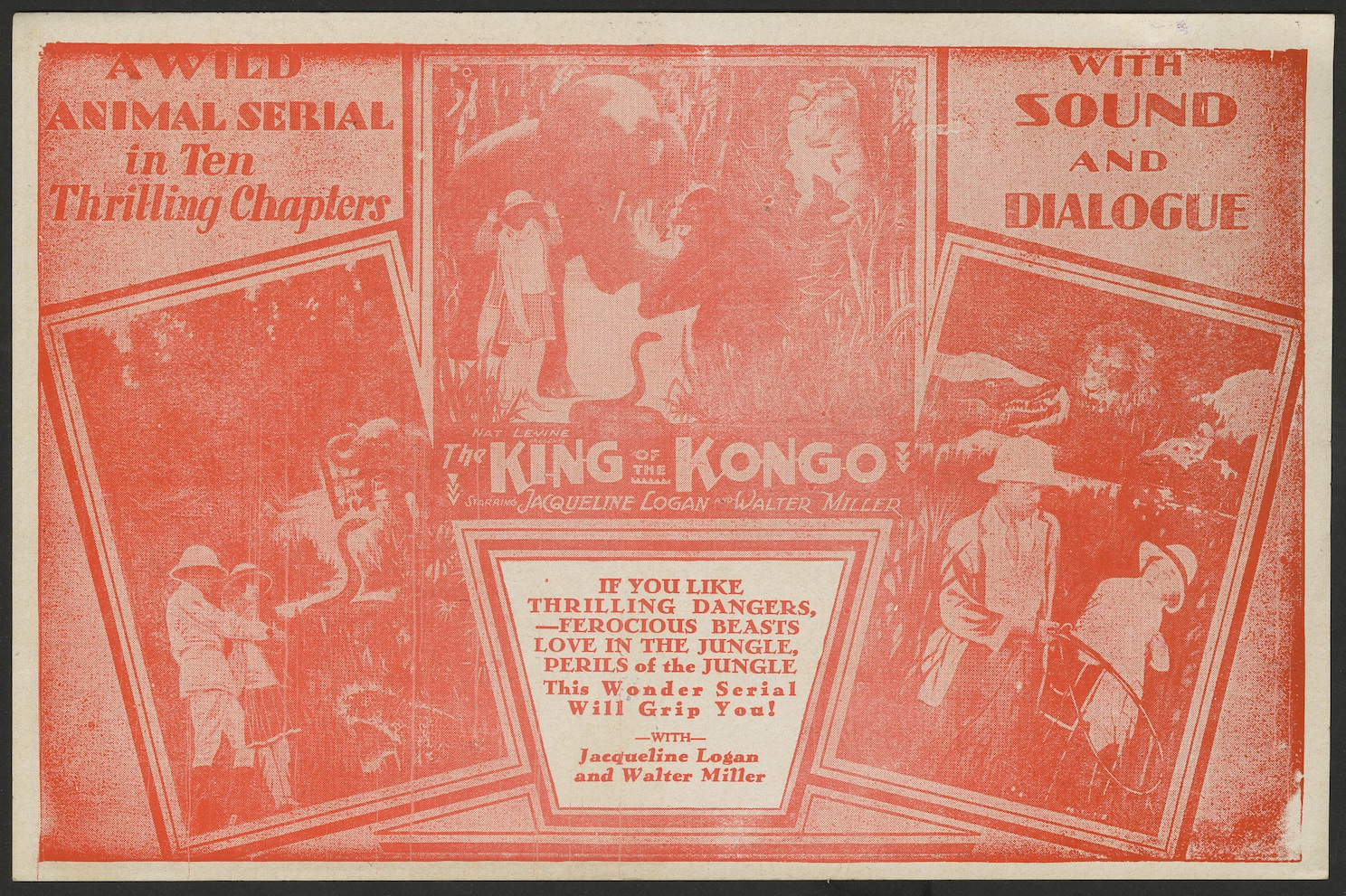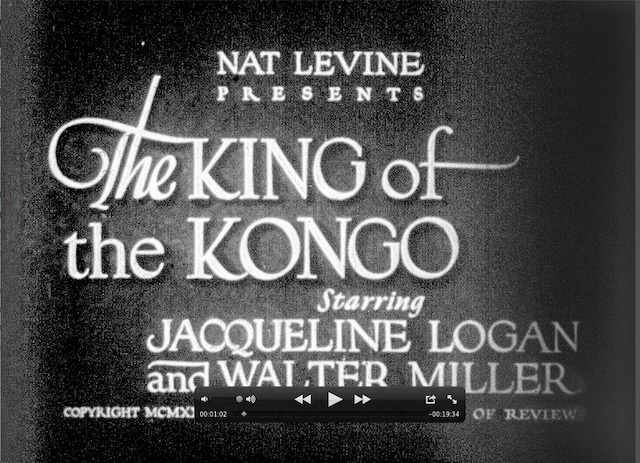If you didn’t read my last blog post, James Bond Meets King of the Kongo, then you won’t understand this post at all, so you’d be well-advised to go back and read that one first.
When we last left the saga, it looked as if our hero, the film preservationist, was in a dire predicament. The film looked as if it would not be saved, the Kickstarter grant was compromised at best.
In desperation, he stares at the ceiling of the cavernous room, hoping against hope that someone, anyone, can rush in and save him. The odds are overwhelming and he’s just one man. Then, against all the odds, through a shower of bullets, a group of gray-clad ninjas breaks through the roof, sliding down on thin ropes to rush in and give the hero the hope he so desperately needs.
It’s the end of You Only Live Twice (1967), and James Bond has been rescued by the ninjas. He goes on to defeat Blofeld, blow up a volcano, save the space program, and avert global thermonuclear war.
But that same description also fits the end of Brazil (1985), at which point our hero, Sam Lowry, has lost all grip on reality and fantasizes about a rescue that will not, and cannot come.
And me, well, I wasn’t sure quite which one I was.
My options had shrunken to one, and my funding was almost zero. I’d been criticized by a serial preservation group, and betrayed by a friend. Frankly, things looked pretty dire. I had fashioned a note apologizing to my grant donors explaining the situation and offering a partial refund.
My last hope seemed to be teetering on the edge… I’d had an intrepid envoy, who I’ll identify as Cinerama Jones, to the last remaining lab that could do the work I needed, and I got a call that he’d been admitted to the emergency room with a raging fever and an out-of-control white cell count.
I’d been pinning a lot of hope on this project, because I find it distressing that archives are only funded to do high-profile restorations. Well, King of the Kongo is about as low-profile as it gets. It’s historically significant, interesting for some of the cast that appears, but, honestly, it’s not a landmark piece of cinema, and we only have about 1/10 of the sound for the whole serial.
But that doesn’t make it any less cool. I was hoping to parlay this into doing more restorations of little niche films like this, but I knew there was no hope if I had to crawl out of this one.
I was really bummed and pretty cranky. Many of my friends will agree that I was cranky! Then, interesting things started to happen. It was very strange.
First, the gentleman I identified as Red Grant read the previous installment and recognized himself. He emailed me, and I ignored him, and then he called (I don’t have caller ID… I still have a LAND LINE!) so I picked up. He carefully explained that his demand for copying rare film in exchange for doing King of the Kongo was only a joke. He apologized profusely. I have to give him that.
He’s known for somewhat “edgy” jokes, but that one was over the edge. The bottom line was that he was serious about not being able to do the work, so the only real difference was that one way I was cheesed off and without a film, and the other way I was just without a film.
It’s actually more severe than that. Red’s failure to do what I’d asked him to do has cost Silent Cinema (see below) a lot of money and me a lot of headaches. Woody Allen has a rule, “90% of success is just showing up.” I’ve got a corollary: “The rest of success is doing what you said you would do.” Of course, Red’s counter to that was that he didn’t realize that I was on a tight deadline and that caused the whole problem. We can go around and around on that… but the deadline is clearly outlined in the Kickstarter proposal for all to see.
Should I forgive Red or not? I’m not sure. I do have another rule, “Never ascribe malice to anything that could be explained by stupidity.” And this, well, this is stupid. Maybe I will forgive him. I’ll have to cool off first, though.
Struggling valiantly against a fluctuating fever and accompanying weakness, Cinerama Jones managed to get a deal struck with the lab, and he also found some funding to get the film transfer done. Now, this all happened simultaneously with the deal in Italy failing because I couldn’t find a good way to get the files to him, a lab in Maryland outpricing me, and Red Grant’s calling. I have to say I wasn’t optimistic that anything could be worked out, but I had some good people on my side.
Cinerama Jones arranged for Silent Cinema Presentations, Inc, a great group that I’ve worked with many times, to donate the completion funds , as well as finding a kindly anonymous donor, who thought the project was cool, to kick in some cash at the last minute.
The whole thing meant I had to do an elaborate re-rendering of all the credits and some other technical bits, which seems always to take tons of time, but on Friday I sent off Kongo to Metropolis Film Labs, where it will be converted back to film. They haven’t received it yet, so I just have to hope what I sent them works well.
There’s still some talk about Kongo appearing on a major TV network, and whether that will happen or not is up in the air.
I’m also hoping to put the restored print in as part of an episode of Dr. Film. That still may happen. I’m working on a grant to make more Dr. Film episodes. Whether that will happen is also an open question; statistically it’s rather doubtful, but we got Kongo going… maybe this will go too.
So what goes from here? Well, Kongo should still premiere at the Syracuse Cinefest, thanks to Silent Cinema. We’re still looking at distribution channels forDr. Film, and Kongo should appear on that. Dr. Film may appear on an independent station, or it may yet make it to a major national network, or it may not appear at all. Right now, we just don’t know.
Stay tuned.




